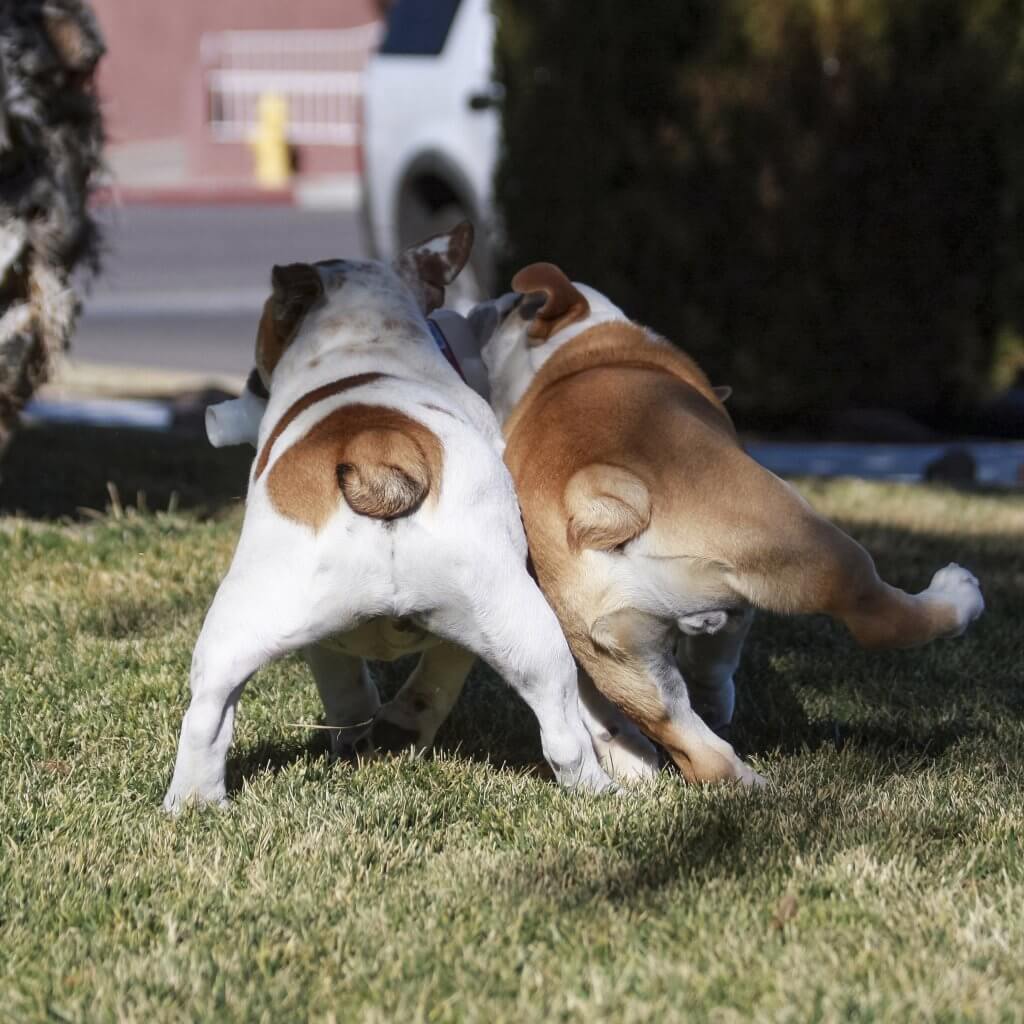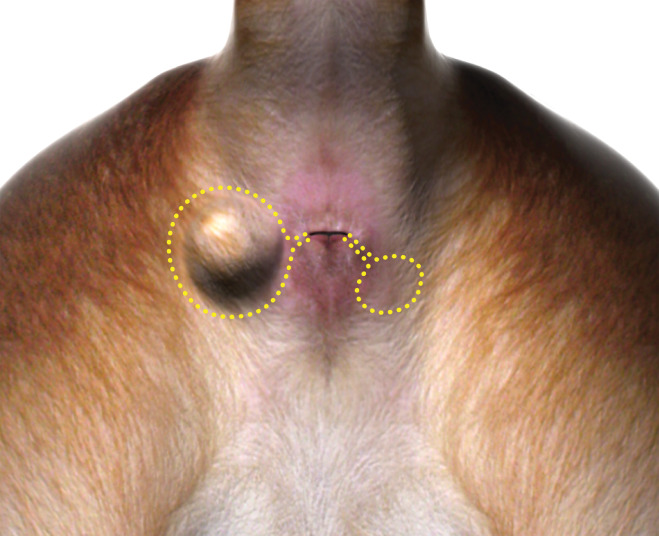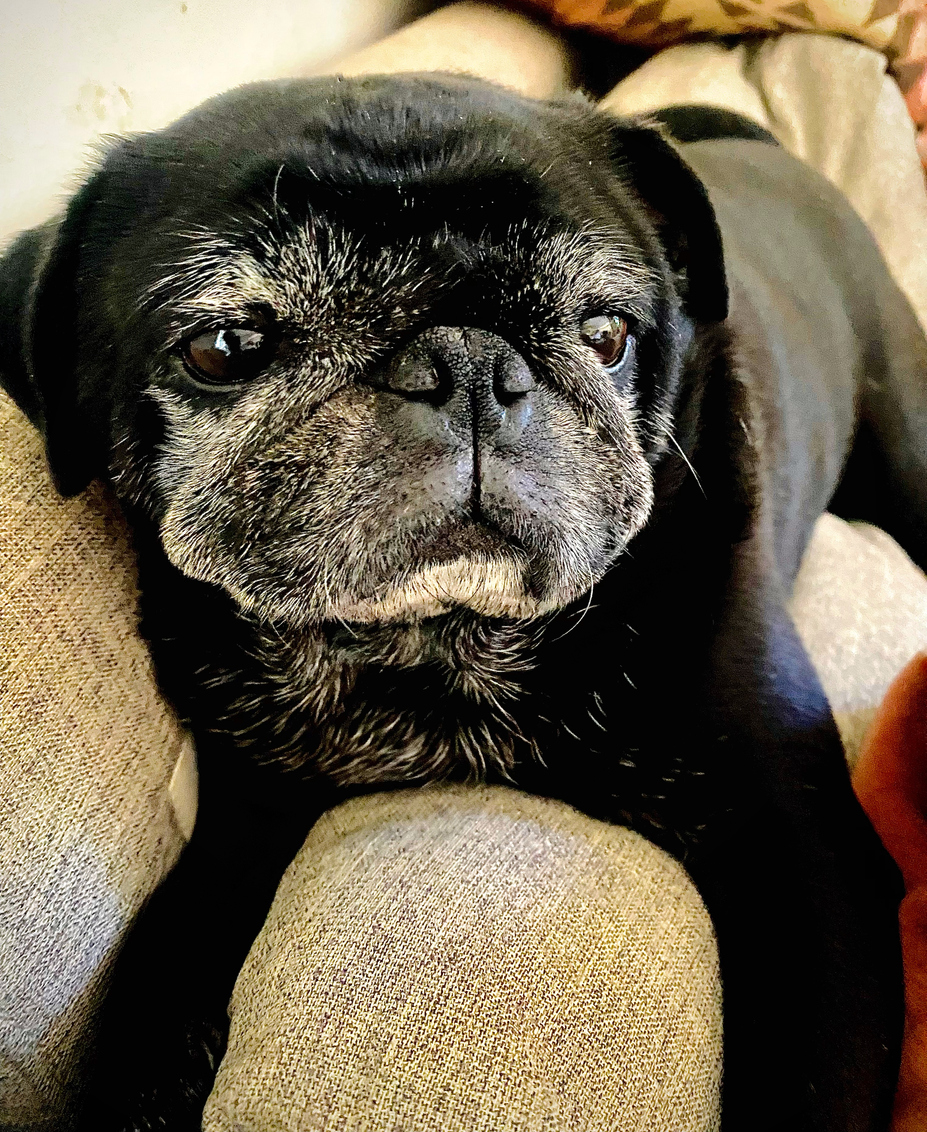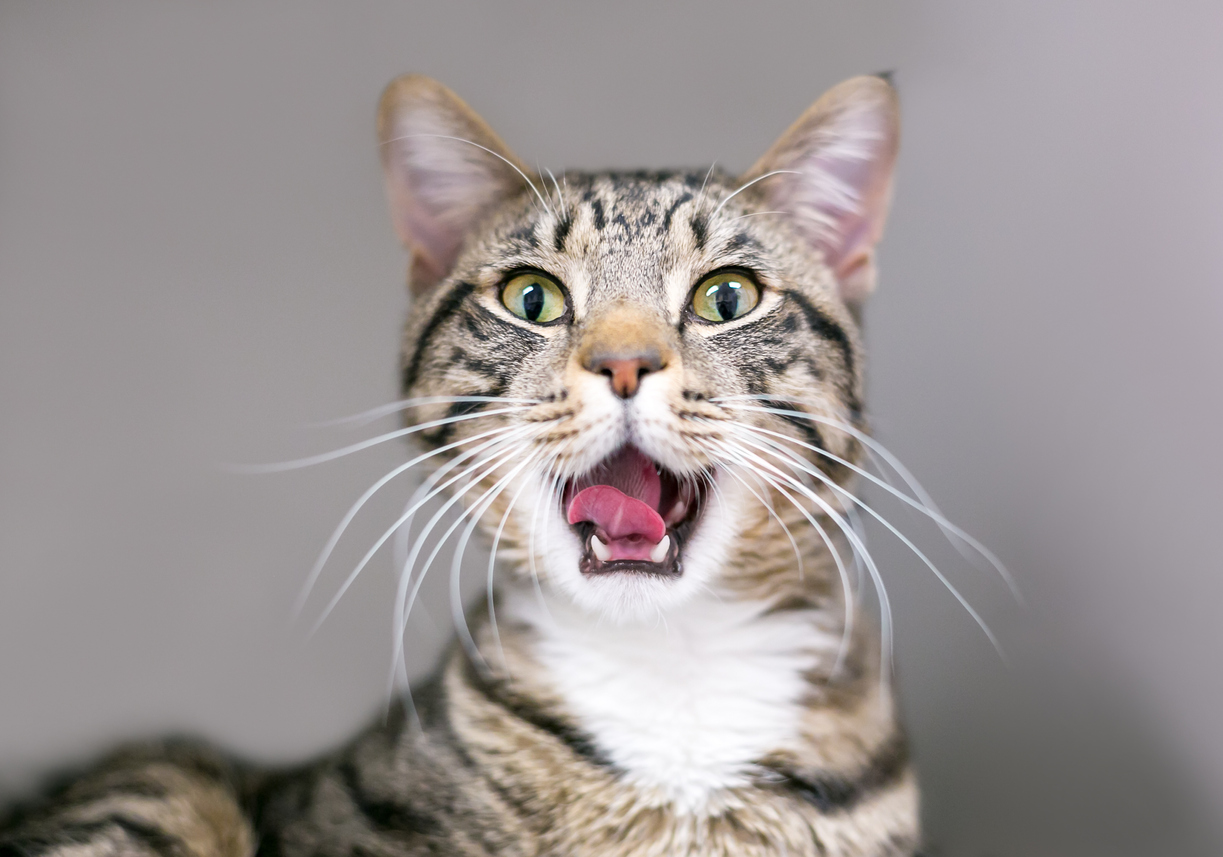Anal Gland Sacculectomy
What are the anal sacs?
The anal sacs are two small pouches located on either side of the anus at approximately the four o'clock and eight o'clock positions. The walls of the sac are lined with a large number of sebaceous (sweat) glands that produce a foul-smelling fluid. The fluid is stored in the anal sacs and then released through a small duct or canal that opens just inside the anus. The anal sacs are commonly referred to as anal glands. The sacs are present in both male and female dogs and cats.

What is their function?
The anal sac secretion contains chemicals that act as territorial markers. The secretions are similar to those produced by a skunk, which is used to repel enemies and alert other animals to their presence. Anal sac fluid is usually squeezed out by muscular contractions whenever they passes a bowel movement, providing a distinctive odor (or individual 'scent signature') to the feces.
What is anal sac disease?
Anal sac disease is very common in dogs and cats. The sacs frequently become impacted (plugged), usually due to inflammation of the ducts. The secretion within the impacted sacs will thicken and the sacs will become swollen and distended, making it painful for your pet to pass feces.
The secreted material within the anal sacs is an ideal medium for bacterial growth, allowing abscesses to form. Bacteria that are normally present in the feces can readily travel up the ducts and enter the sacs. In normal situations, the bacteria are flushed out when the secretions are expelled during a bowel movement. However, if the sacs are impacted, the fluid does not empty normally, and they become infected. The fluid then becomes bloody and, eventually, the sacs become filled with pus, forming an anal sac abscess. The abscess will appear as a painful, red, hot swelling on one or both sides of the anus. If the abscess bursts, it will release greenish-yellow or bloody pus. If left untreated, the infection can quickly spread and cause severe damage to the anus and rectum.
How will I know if my pet has anal sac problems?
The first sign is often scooting or dragging the rear end along the ground. There may be excessive licking or biting, often at the base of the tail rather than the anal area. If the anal sac ruptures, you may see blood or pus draining from the rectum. Anal sac disease is very painful. Even normally gentle pet may snap or growl if you touch the tail or anus if they are affected.

How is anal sac disease treated?
The treatment for impaction is to express the sacs and flush out the solidified material. Infusing the affected sac with anti-inflammatory and antibiotic medication may also be required. Because this can be painful, treatment may require sedation.
For infection, the sacs must be expressed, and oral antibiotics may be administered to kill the bacteria. Most patients will respond well to pain relief medications and antibiotics that are prescribed for several days until the swelling and inflammation have subsided. Your veterinarian may also recommend using warm compresses for additional pain relief.
Your veterinarian will let you know when your pet should be reassessed. This reassessment will likely include expressing the anal glands again and may require a repeat infusion of anti-inflammatory and antibiotic medication.
If the anal sacs are abscessed but have not ruptured, surgical treatment to lance the abscess may be necessary.
Is the condition likely to recur?
Some patients will have recurrent anal sac impactions or abscesses. The causes of recurrent anal sac disease are not clear but many conditions appear to predispose patients. Overweight patients tend to have chronic anal sac problems because their anal sacs do not empty well. Changes in stool consistency such as diarrhea or constipation can lead to anal sac disease. Skin allergies have also been theorized as contributing to anal sac disease.
If your pet experiences recurrent anal sac disease, he should be assessed and treated for any underlying conditions to reduce recurrence. If your pet has several episodes of anal sac disease and recommended treatments, such as dietary changes, lifestyle changes, supplements, or medications do not relieve the problem, the anal sacs can be removed surgically.

Are anal sacs necessary for my pet?
Anal sacs produce the pungent smelling secretion that allows the dogs and cats to mark his or her territory. For our domesticated pets, this is an unnecessary behavior and removal will not adversely affect your pet.



